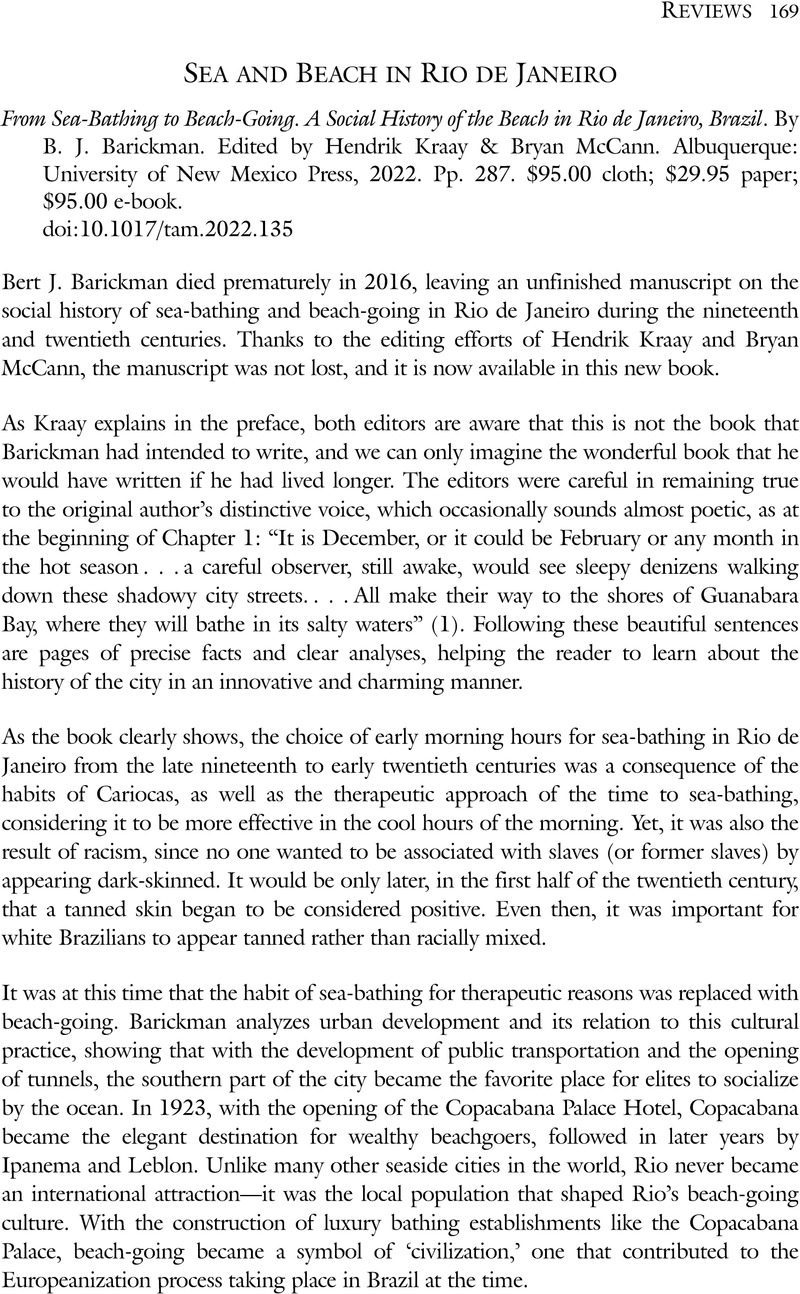No CrossRef data available.
Article contents
Sea and Beach in Rio de Janeiro - From Sea-Bathing to Beach-Going. A Social History of the Beach in Rio de Janeiro, Brazil. By B. J. Barickman. Edited by Hendrik Kraay & Bryan McCann. Albuquerque: University of New Mexico Press, 2022. Pp. 287. $95.00 cloth; $29.95 paper; $95.00 e-book.
Review products
From Sea-Bathing to Beach-Going. A Social History of the Beach in Rio de Janeiro, Brazil. By B. J. Barickman. Edited by Hendrik Kraay & Bryan McCann. Albuquerque: University of New Mexico Press, 2022. Pp. 287. $95.00 cloth; $29.95 paper; $95.00 e-book.
Published online by Cambridge University Press: 10 February 2023
Abstract
An abstract is not available for this content so a preview has been provided. Please use the Get access link above for information on how to access this content.

- Type
- Book Review
- Information
- Copyright
- Copyright © The Author(s), 2023. Published by Cambridge University Press on behalf of Academy of American Franciscan History


